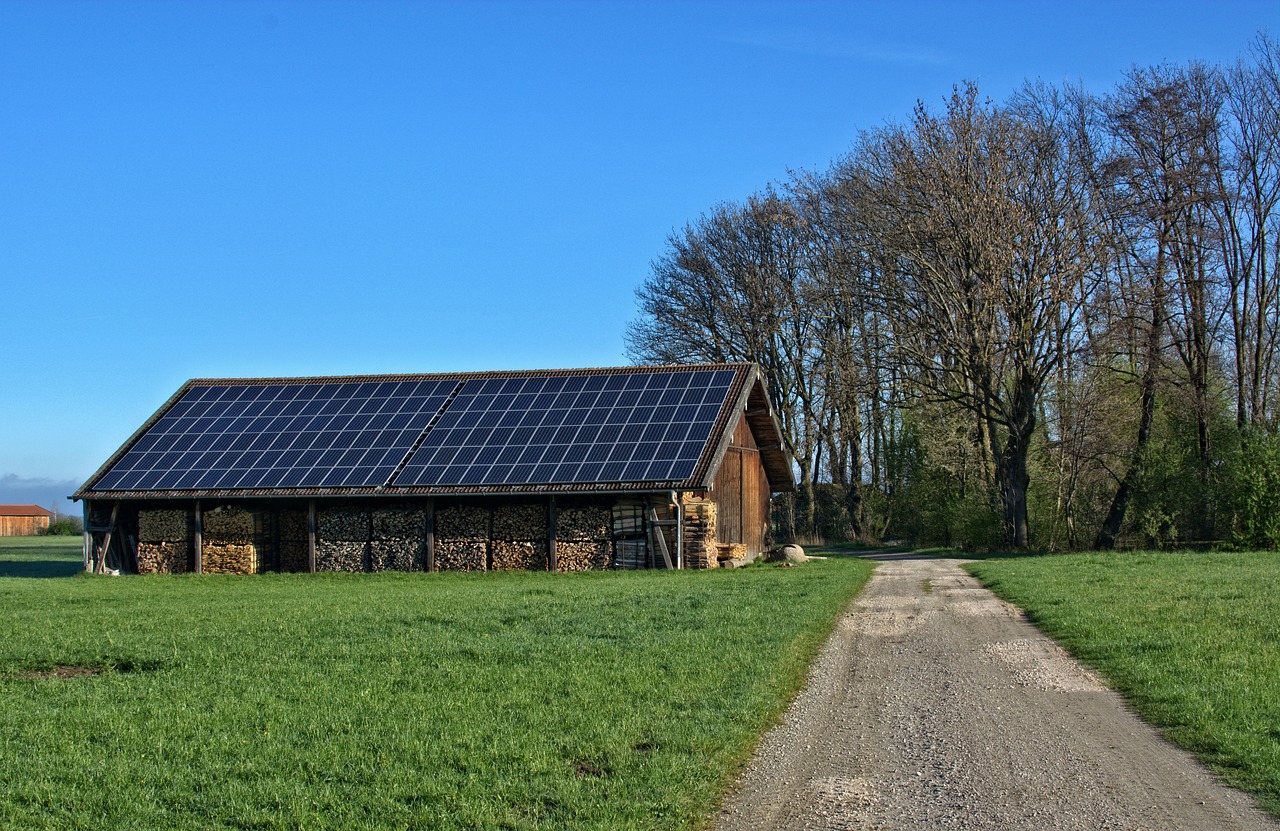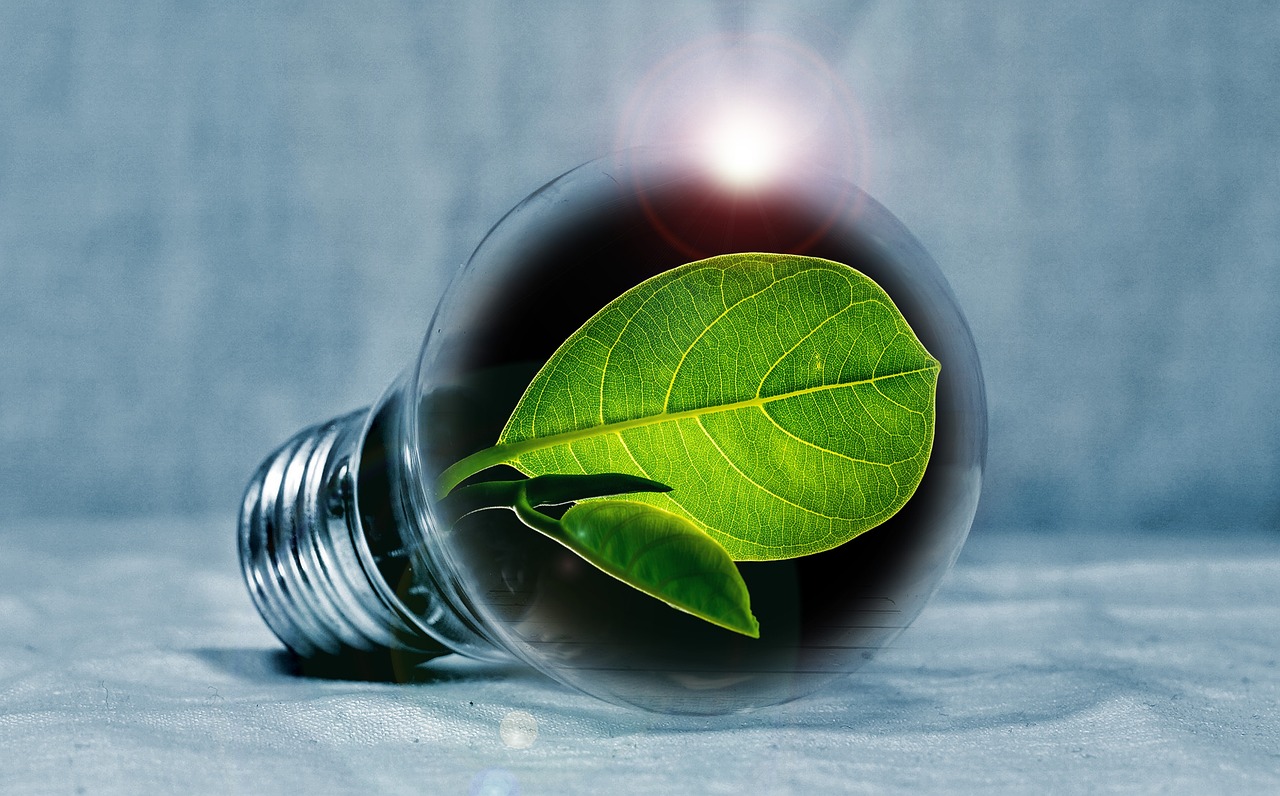The Future of Homes - Energy Self-Sufficiency and Green Building
Welcome to the future of living! Imagine a world where your home not only provides shelter but also generates its own energy. Sounds like something out of a sci-fi movie, right? Well, it's becoming a reality! This article dives into the evolving landscape of residential energy solutions, highlighting innovations in energy self-sufficiency and sustainable building practices. These advancements promise to redefine how we think about our homes and our impact on the environment.
So, what exactly is energy self-sufficiency? In simple terms, it means that homes can generate their own energy, significantly reducing their reliance on external sources. This shift is not just a trend; it's a necessity as we face increasing energy costs and environmental concerns. Imagine waking up every morning knowing that your home is powered by the sun or wind, reducing your carbon footprint and saving money at the same time. The benefits are numerous:
- Cost Savings: Lower electricity bills and potential income from selling excess energy back to the grid.
- Energy Independence: Less reliance on fossil fuels and energy suppliers.
- Environmental Impact: Reduced greenhouse gas emissions and a smaller carbon footprint.
Technologies enabling this shift include solar panels, wind turbines, and energy storage systems. Each of these plays a crucial role in creating homes that can stand on their own in terms of energy production.
Renewable energy sources are the backbone of achieving energy self-sufficiency. Think of them as the superheroes of sustainable living! They come in various forms, including solar, wind, and geothermal energy. By integrating these resources into modern homes, we can create a sustainable living environment that benefits not only homeowners but also the planet.
When it comes to renewable energy, solar energy is leading the charge. Recent advancements in solar technology have made it more efficient and accessible than ever before. Modern solar panels are sleek, powerful, and can be installed on rooftops or integrated into building designs. These innovations are revolutionizing residential energy consumption, allowing homeowners to harness the sun's power like never before.
One of the most exciting developments in solar technology is building-integrated photovoltaics (BIPV). This innovative approach blends solar energy generation with building materials, turning facades and roofs into energy-generating surfaces. Not only does this technology provide an aesthetic appeal, but it also maximizes energy production without compromising design. With BIPV, homes can become beautiful energy powerhouses!
But what happens when the sun goes down? That's where solar battery storage systems come into play. These systems allow homeowners to store excess energy generated during the day for use at night or during cloudy days. Imagine having a fully charged battery that powers your home, even when the sun isn't shining. It's a game-changer for achieving true energy independence!
While solar energy may steal the spotlight, wind energy also holds significant potential for residential energy self-sufficiency. Small-scale wind turbines can be installed in both urban and rural settings, providing an additional source of renewable energy. These turbines harness the power of the wind, converting it into electricity that can power your home. It's like having your own personal wind farm right in your backyard!
Now that we've explored energy self-sufficiency, let's talk about green building practices. These practices focus on sustainability and resource efficiency in construction. The principles of green building guide the development of eco-friendly homes that minimize environmental impact while maximizing comfort and functionality.
Energy-efficient design principles aim to minimize energy consumption in homes. Strategies such as passive solar design and natural ventilation enhance efficiency by utilizing natural resources for heating and cooling. Think of it as designing your home to work with nature, rather than against it. By incorporating these principles, homeowners can enjoy a comfortable living space while reducing their energy bills.
The choice of materials is vital in green building. Opting for sustainable materials not only reduces environmental impact but also contributes to the overall energy efficiency of a home. From recycled materials to sustainably sourced wood, every choice counts. It's like building a puzzle where each piece plays a role in creating a harmonious, eco-friendly living space.
Q: What is energy self-sufficiency?
A: Energy self-sufficiency refers to homes generating their own energy, reducing reliance on external sources.
Q: How can I make my home energy self-sufficient?
A: You can install solar panels, wind turbines, and energy storage systems to create a self-sufficient energy system.
Q: What are building-integrated photovoltaics (BIPV)?
A: BIPV are solar energy systems integrated into building materials, allowing homes to generate energy without sacrificing aesthetics.
Q: Why are green building practices important?
A: Green building practices focus on sustainability and resource efficiency, reducing environmental impact and energy consumption.

Understanding Energy Self-Sufficiency
Energy self-sufficiency is a transformative concept that is reshaping the way we think about our homes and their energy consumption. Imagine a world where your home generates its own power, reducing your reliance on external energy sources and freeing you from the fluctuations of energy prices. This isn’t just a dream; it’s becoming a reality for many homeowners thanks to advancements in technology and a growing awareness of environmental issues.
At its core, energy self-sufficiency means that a home can produce enough energy to meet its own needs. This can be achieved through various means, the most popular being solar panels and energy storage systems. These technologies allow homeowners to harness the power of the sun and store excess energy for use during periods of low production, such as at night or during cloudy days. The benefits are numerous:
- Cost Savings: By generating your own electricity, you can significantly reduce or even eliminate your monthly utility bills.
- Environmental Impact: Utilizing renewable energy sources decreases your carbon footprint, contributing to a healthier planet.
- Energy Independence: With your own energy supply, you're less vulnerable to energy crises and price hikes.
Technologies enabling energy self-sufficiency are continually evolving. For instance, solar panels have become more efficient and affordable over the years, making them accessible to a larger segment of the population. Additionally, innovations in battery storage allow homeowners to store surplus energy generated during peak sunlight hours, ensuring that they have power available whenever they need it. This not only enhances energy independence but also provides a buffer against outages and grid failures.
Moreover, energy self-sufficiency can be achieved through a combination of renewable energy sources. While solar power is the most commonly adopted technology, other sources like wind power and geothermal energy are also gaining traction. Small-scale wind turbines, for example, can be installed in suitable locations to complement solar energy systems, providing additional power and further enhancing self-sufficiency.
In summary, energy self-sufficiency is not just a trend; it's a necessary evolution in how we approach energy consumption in our homes. With the right technologies and a commitment to sustainable practices, homeowners can enjoy the benefits of reduced costs, increased independence, and a smaller environmental footprint. As we delve deeper into renewable energy sources, we will uncover how they play a pivotal role in achieving this self-sufficiency.

The Role of Renewable Energy Sources
When we talk about the future of homes, we can't overlook the pivotal role of renewable energy sources. These sources, including solar, wind, and geothermal energy, are not just buzzwords; they're the backbone of a sustainable lifestyle that promises to reshape our living spaces. Imagine a world where your home doesn't just consume energy but generates it, contributing positively to the environment. This is the exciting reality that renewable energy brings to the table, and it's transforming how we think about energy consumption.
First off, let's dive into solar energy. It's hard to ignore the sun's potential, especially when you consider that it provides more energy in one hour than the entire world consumes in a year! By harnessing this abundant resource, homeowners can significantly reduce their reliance on fossil fuels. Solar panels have become more efficient and affordable, making them a popular choice for many households. But it's not just about installing panels on roofs; it's about integrating solar solutions into everyday life. For instance, solar water heaters can provide hot water for your home without the need for traditional energy sources, further enhancing your energy independence.
Next, let's not forget about wind energy. While you might picture vast wind farms when you think of wind power, small-scale wind turbines are making waves in residential areas too. These compact devices can generate electricity for homes, especially in regions with consistent wind patterns. Imagine waking up to a breeze that not only cools your home but also powers your morning coffee! The feasibility of wind turbines in urban settings is growing, making them a viable option for those looking to embrace a more sustainable lifestyle.
Then we have geothermal energy, which utilizes the Earth's internal heat for heating and cooling purposes. This is like having a natural thermostat right beneath your feet! Geothermal heat pumps can dramatically reduce energy consumption in homes, providing a reliable and efficient source of heating in winter and cooling in summer. It’s a technology that’s been around for a while, but its integration into residential buildings is becoming more prevalent, thanks to its low operational costs and minimal environmental impact.
To illustrate the benefits of these renewable sources, consider the following table that compares their key features:
| Energy Source | Advantages | Considerations |
|---|---|---|
| Solar Energy |
|
Requires sunlight; initial installation costs |
| Wind Energy |
|
Dependent on wind availability; noise concerns |
| Geothermal Energy |
|
Higher upfront costs; site-specific |
In conclusion, the integration of renewable energy sources into our homes is not just a trend; it's a necessary shift towards a more sustainable future. As technology continues to advance, these energy solutions will become even more efficient and accessible, making energy self-sufficiency a reality for homeowners everywhere. So, why wait? Embrace the change and be part of the energy revolution!
Q: What are the most common renewable energy sources for homes?
A: The most common renewable energy sources for homes include solar panels, small wind turbines, and geothermal heating systems.
Q: How much can I save on energy bills by using renewable energy?
A: Savings can vary widely depending on your location and energy consumption, but many homeowners report significant reductions in their energy bills after installing renewable energy systems.
Q: Are there any government incentives for installing renewable energy systems?
A: Yes, many governments offer tax credits, rebates, and other incentives to encourage the installation of renewable energy systems.

Solar Energy Innovations
When we talk about , we're diving into a realm that has been evolving at a breakneck pace. Gone are the days when solar panels were bulky, expensive, and inefficient. Today, advancements in technology have transformed solar energy into a viable, mainstream power source for homes. But what does this mean for the average homeowner? It means that harnessing the sun's energy is not just a dream anymore; it’s a reality that can lead to significant savings and a smaller carbon footprint.
One of the most exciting developments in this field is the emergence of high-efficiency solar panels. These panels can convert a larger percentage of sunlight into electricity, making them a smart investment for homeowners looking to maximize their energy output. For instance, while traditional panels might have an efficiency rating of around 15-18%, newer models can achieve efficiencies of over 22%. This leap in technology means that you can generate more energy from a smaller surface area, making it feasible even for homes with limited roof space.
Moreover, innovations like solar shingles are changing the game. These sleek, aesthetically pleasing alternatives to traditional solar panels blend seamlessly with standard roofing materials, allowing homeowners to maintain the visual appeal of their homes while reaping the benefits of solar energy. Imagine a roof that not only protects your home but also generates electricity! This is the future of residential energy solutions.
Another key player in the solar energy landscape is the development of smart solar technology. This technology includes systems that can optimize energy consumption and production in real-time. For instance, when the sun is shining brightly, these systems can automatically adjust to store excess energy or divert it to power your home, ensuring that you use energy efficiently. This not only maximizes savings but also contributes to energy independence, allowing homeowners to rely less on the grid.
To give you a clearer picture of how these innovations stack up, here’s a brief overview of some of the leading technologies in the solar energy market:
| Technology | Description | Efficiency Rate |
|---|---|---|
| Traditional Solar Panels | Standard panels that convert sunlight to electricity. | 15-18% |
| High-Efficiency Panels | Advanced panels with improved light absorption. | 22%+ |
| Solar Shingles | Roofing materials that generate solar energy. | Varies, typically around 20% |
| Smart Solar Systems | Integrated systems that optimize energy use. | N/A |
As we continue to innovate, the potential for solar energy is boundless. The integration of solar technologies into our homes not only promotes sustainability but also empowers homeowners to take control of their energy consumption. With the right tools and systems in place, the dream of energy self-sufficiency is closer than ever.
- What are the benefits of solar energy? Solar energy reduces electricity bills, minimizes reliance on fossil fuels, and contributes to environmental sustainability.
- How much can I save by installing solar panels? Savings can vary, but many homeowners see a reduction of 50% or more in their energy costs.
- Do solar panels work on cloudy days? Yes, solar panels can still generate electricity on cloudy days, although their efficiency may be reduced.
- What is the lifespan of solar panels? Most solar panels have a lifespan of 25-30 years, with warranties often covering that period.

Building-Integrated Photovoltaics
Building-Integrated Photovoltaics (BIPV) are revolutionizing the way we think about solar energy in our homes. Imagine a world where your roof not only protects you from the elements but also generates electricity. That's the magic of BIPV! These innovative systems integrate solar panels directly into building materials, such as roofs, windows, and facades, allowing homeowners to harness solar energy without compromising on aesthetics or functionality.
The beauty of BIPV lies in its dual purpose. Not only do these systems provide energy, but they also serve as a part of the building's structure. For instance, a sleek, modern building can feature solar glass windows that look stunning while generating power. This integration means that homeowners can reduce their energy bills while enhancing the visual appeal of their properties. It's like having your cake and eating it too!
Furthermore, BIPV can significantly reduce the overall carbon footprint of a home. By generating energy on-site, homeowners can decrease their reliance on fossil fuels and contribute to a cleaner environment. This is particularly important as we face the challenges of climate change and the urgent need for sustainable solutions. The more we can do to reduce our impact on the planet, the better off we'll all be.
Another noteworthy aspect of BIPV is its potential to increase property value. Homes equipped with these advanced solar technologies are often more attractive to buyers who prioritize sustainability and energy efficiency. According to recent studies, properties with BIPV systems can sell for a premium compared to traditional homes. It's a smart investment for the future!
In terms of performance, BIPV systems have come a long way. Modern technologies have made these solar solutions more efficient, allowing them to generate more energy even in less-than-ideal conditions. For instance, advancements in photovoltaic materials have led to improved light absorption and energy conversion rates, making BIPV a viable option for a wide range of climates and locations.
To illustrate the benefits of BIPV, consider the following table that highlights some key advantages:
| Advantage | Description |
|---|---|
| Aesthetic Appeal | BIPV systems blend seamlessly with building designs, enhancing visual attractiveness. |
| Energy Generation | They provide renewable energy directly from the building's surfaces. |
| Reduced Carbon Footprint | By generating on-site energy, they lower reliance on fossil fuels. |
| Increased Property Value | Homes with BIPV systems can command higher prices in the real estate market. |
In conclusion, Building-Integrated Photovoltaics represent a significant leap forward in sustainable building practices. They not only offer practical energy solutions but also enhance the overall design and value of homes. As technology continues to evolve, we can expect BIPV to become a standard feature in new constructions, paving the way for a greener, more energy-efficient future.
- What are Building-Integrated Photovoltaics? BIPV are solar technologies integrated into building materials, allowing structures to generate electricity.
- How do BIPV systems work? They capture sunlight through photovoltaic cells embedded in building materials, converting it into usable energy.
- Are BIPV systems more expensive than traditional solar panels? While the initial investment can be higher, the long-term savings and increased property value often offset the costs.
- Can BIPV be used in any climate? Yes, modern BIPV technologies are designed to perform efficiently in various weather conditions.

Solar Battery Storage Solutions
In the quest for energy independence, solar battery storage solutions have emerged as a game-changer for homeowners. Imagine a world where you can harness the sun's energy during the day and use it to power your home at night or during cloudy days. Sounds like magic, right? But it's not; it's the result of innovative technology that allows us to store excess solar energy for later use. This capability not only enhances the efficiency of solar energy systems but also provides a safety net during power outages or peak demand times.
At the heart of solar battery storage are advanced technologies that have evolved significantly in recent years. Leading the charge are lithium-ion batteries, known for their high energy density and long lifespan. However, there are also emerging alternatives like flow batteries and lead-acid batteries, each with its unique advantages. For instance, flow batteries offer scalability and are particularly suited for larger installations, while lithium-ion batteries are compact and efficient, making them ideal for residential use.
One of the most compelling reasons to invest in solar battery storage is the potential for cost savings. By storing energy generated during the day, homeowners can reduce their reliance on the grid, especially during peak hours when energy rates are highest. This not only lowers electricity bills but can also lead to significant savings over time. To illustrate the benefits, consider the following table that compares the costs and savings associated with different battery types:
| Battery Type | Average Cost | Cycle Life (Years) | Potential Savings |
|---|---|---|---|
| Lithium-Ion | $7,000 - $15,000 | 10 - 15 | Up to $1,000/year |
| Flow Battery | $10,000 - $20,000 | 10 - 20 | Up to $1,200/year |
| Lead-Acid | $5,000 - $10,000 | 3 - 5 | Up to $800/year |
Additionally, the integration of solar battery storage with smart home technology can enhance energy management. Homeowners can monitor their energy usage in real-time, optimizing when to draw from the battery or the grid. This level of control not only maximizes savings but also contributes to a more sustainable lifestyle. It's like having a personal energy assistant that helps you make the most out of your resources!
However, before jumping into a solar battery investment, it's crucial to assess your energy needs and usage patterns. Consider factors such as your home's energy consumption, the size of your solar panel system, and the local energy rates. By understanding these variables, you can choose the right battery system that aligns with your goals for energy self-sufficiency.
In conclusion, solar battery storage solutions are not just a trend; they are a vital component of the future of energy-efficient homes. With the right technology, homeowners can enjoy the benefits of renewable energy while taking significant steps towards sustainability and cost savings. So, are you ready to embrace this energy revolution and make your home a beacon of green living?

Wind Energy Potential
When we think about renewable energy, wind power often takes a backseat to its flashier cousin, solar energy. But don’t be fooled—wind energy holds tremendous potential for residential energy self-sufficiency! Imagine harnessing the power of the wind right in your backyard, generating clean energy while reducing your carbon footprint. Sounds like a dream, right? Well, with the advancement of technology, this dream is becoming a reality for many homeowners.
Wind energy systems, particularly small-scale wind turbines, are becoming increasingly feasible for both urban and rural settings. These turbines convert kinetic energy from the wind into mechanical power, which can then be transformed into electricity. The beauty of these systems lies in their versatility. They can be installed on rooftops or in yards, making them suitable for various property types. In fact, many homeowners are discovering that these systems can significantly lower their electricity bills while contributing to a greener planet.
One of the main advantages of wind energy is its ability to produce energy even when the sun isn’t shining. This is particularly beneficial in regions where solar energy may be less effective during certain seasons. By combining wind and solar energy systems, homeowners can achieve a more balanced and reliable energy supply. However, before diving headfirst into a wind energy investment, it’s essential to consider a few factors:
- Location: The effectiveness of wind turbines largely depends on the wind patterns in your area. Homes in open spaces or elevated locations typically experience better wind flow.
- Regulations: Local zoning laws and regulations can impact the installation of wind turbines. It's crucial to check with local authorities before making any decisions.
- Initial Costs: While the long-term savings can be significant, the upfront costs of purchasing and installing a wind turbine can be a barrier for some homeowners.
Despite these considerations, the potential for wind energy is undeniable. According to the U.S. Department of Energy, a single small wind turbine can generate enough electricity to power a home, depending on the wind speed and turbine size. In fact, homes equipped with wind energy systems can achieve up to 90% energy independence in optimal conditions!
Moreover, integrating wind energy into your home not only contributes to energy self-sufficiency but also enhances the overall value of your property. Eco-friendly homes are increasingly sought after in the real estate market, and having a renewable energy system can make your home more attractive to potential buyers.
In conclusion, the wind energy potential for residential homes is vast and largely untapped. As technology continues to evolve, we can expect to see more homeowners embracing this sustainable energy source. So, if you're considering ways to make your home more energy-efficient, don’t overlook the power of the wind—it may just be the solution you’ve been searching for!
Q: Can I install a wind turbine in my backyard?
A: Yes, but it’s important to check local zoning laws and regulations regarding the installation of wind turbines.
Q: How much energy can a small wind turbine generate?
A: The energy output depends on the size of the turbine and local wind conditions, but a small turbine can often provide a significant portion of a home's energy needs.
Q: Are there any incentives for installing wind energy systems?
A: Many governments offer tax credits, rebates, and other incentives for homeowners who invest in renewable energy systems, including wind turbines.
Q: What are the maintenance requirements for a wind turbine?
A: Wind turbines generally require minimal maintenance, but regular inspections and occasional repairs may be necessary to ensure optimal performance.

Green Building Practices
In today's world, where environmental concerns are more pressing than ever, have emerged as a beacon of hope for sustainable living. These practices not only aim to minimize the environmental impact of construction but also enhance the quality of life for the inhabitants. Imagine living in a home that not only shelters you but also contributes positively to the planet. This is the essence of green building, where sustainability meets functionality.
At the core of green building practices are several key principles that guide the development of eco-friendly homes. These principles emphasize resource efficiency, energy conservation, and the use of sustainable materials. For instance, energy-efficient design plays a crucial role in reducing energy consumption. Techniques such as passive solar design leverage natural sunlight to heat homes, thereby decreasing reliance on artificial heating sources. Similarly, natural ventilation strategies can significantly improve indoor air quality while minimizing energy costs.
Moreover, the choice of materials is vital in green building. Using sustainable materials not only reduces the carbon footprint of a construction project but also promotes healthier living environments. Recycled, reclaimed, and rapidly renewable materials are often preferred in green building practices. These materials help in conserving natural resources and reducing waste. For instance, bamboo, a rapidly renewable resource, is increasingly being used in flooring and cabinetry due to its durability and aesthetic appeal.
To further illustrate the impact of green building practices, consider the following table that compares traditional building methods with green building methods:
| Aspect | Traditional Building | Green Building |
|---|---|---|
| Energy Efficiency | Higher energy consumption | Optimized energy use |
| Material Usage | Conventional materials | Sustainable and recycled materials |
| Indoor Air Quality | Often poor due to VOCs | Enhanced through natural ventilation |
| Waste Generation | High during construction | Minimized through careful planning |
In addition to these principles, green building practices often involve obtaining certifications that validate a building's sustainability. Certifications such as LEED (Leadership in Energy and Environmental Design) and BREEAM (Building Research Establishment Environmental Assessment Method) set rigorous standards for energy efficiency, water usage, and overall environmental performance. Achieving these certifications not only boosts a building's market value but also encourages homeowners to adopt more sustainable practices.
As we move forward, the integration of technology in green building practices is becoming increasingly important. Smart home technologies, such as energy management systems and smart thermostats, can help homeowners monitor and control their energy consumption more effectively. This not only leads to cost savings but also contributes to a more sustainable lifestyle. Imagine adjusting your home's temperature from your smartphone while being aware of your energy usage—it's not just convenient; it’s a step towards a greener future.
In conclusion, green building practices are not merely a trend; they represent a fundamental shift in how we approach home construction and living. By focusing on sustainability, energy efficiency, and the use of eco-friendly materials, we can create homes that are not only comfortable and beautiful but also beneficial to the environment. The future of building is green, and it's time we embrace it wholeheartedly.
- What are green building practices? Green building practices focus on sustainability and resource efficiency during construction, aiming to reduce the environmental impact of buildings.
- How do energy-efficient designs contribute to green building? Energy-efficient designs minimize energy consumption by utilizing natural resources like sunlight and wind, ultimately leading to lower energy costs.
- What materials are considered sustainable? Sustainable materials include recycled, reclaimed, and rapidly renewable resources, which help reduce waste and conserve natural resources.
- What certifications are available for green buildings? Certifications like LEED and BREEAM validate a building's sustainability by adhering to strict environmental performance standards.

Energy-Efficient Design
When we talk about , we're diving into a world that prioritizes sustainability while ensuring that our homes are comfortable and functional. Imagine a home that not only keeps you warm in winter and cool in summer but also reduces your energy bills significantly. Sounds like a dream, right? Well, this dream is becoming a reality thanks to innovative design principles that focus on minimizing energy consumption.
One of the key strategies in energy-efficient design is passive solar design. This approach harnesses the sun's energy without the need for mechanical systems. By strategically placing windows, using thermal mass materials, and optimizing the building's orientation, homeowners can take advantage of natural sunlight for heating and lighting. For instance, south-facing windows can capture sunlight during the day, warming the interior spaces, while overhangs can block the intense summer sun, keeping the home cool. It’s like having a built-in air conditioner that operates for free!
Another essential aspect is natural ventilation. This method encourages fresh air to flow through the home, reducing the need for artificial cooling systems. Think of it as creating a cross-breeze that cools your living spaces naturally. By designing homes with strategically placed windows and vents, homeowners can enjoy a refreshing airflow that not only enhances comfort but also cuts down on energy use. It’s like opening your windows on a beautiful spring day—invigorating and refreshing!
Moreover, incorporating energy-efficient appliances is a game-changer in energy-efficient design. These appliances consume less energy while delivering the same performance as their traditional counterparts. For example, Energy Star-rated refrigerators, washing machines, and HVAC systems are designed to use significantly less energy. By investing in these modern appliances, homeowners can save on utility bills while also reducing their carbon footprint.
To further enhance energy efficiency, many designs now include smart home technology. Smart thermostats, lighting systems, and energy monitors allow homeowners to manage their energy consumption more effectively. Imagine being able to control your home's temperature from your smartphone or receiving alerts when energy usage spikes. This level of control not only leads to savings but also promotes conscious energy use, making it easier to live sustainably.
In conclusion, energy-efficient design is about more than just cutting costs; it’s about creating a lifestyle that respects our planet. By embracing principles like passive solar design, natural ventilation, energy-efficient appliances, and smart home technology, we can build homes that are not just shelters, but also champions of sustainability. So, are you ready to make your home a beacon of energy efficiency?
- What is passive solar design?
Passive solar design is an approach that utilizes the sun's energy for heating and lighting without mechanical systems, focusing on building orientation, window placement, and thermal mass. - How can I improve my home's energy efficiency?
You can improve your home's energy efficiency by incorporating passive solar design, using energy-efficient appliances, and integrating smart home technology. - What are some examples of energy-efficient appliances?
Examples include Energy Star-rated refrigerators, washing machines, and HVAC systems that use less energy while maintaining performance. - Can natural ventilation really reduce energy costs?
Yes! Natural ventilation can significantly reduce the need for air conditioning, leading to lower energy costs and a more comfortable living environment.

Materials and Resources
When it comes to green building, the choice of materials is not just a matter of aesthetics; it plays a crucial role in the overall sustainability of a home. Selecting the right materials can significantly reduce the environmental impact of construction while enhancing energy efficiency. Think of it as choosing the right ingredients for a delicious recipe; the quality of each component affects the final dish. In the context of construction, this means opting for materials that are not only sustainable but also durable and efficient.
One of the most exciting aspects of modern construction is the availability of sustainable materials. These can include recycled materials, rapidly renewable resources, and even locally sourced options. For instance, using reclaimed wood not only gives your home a unique character but also minimizes the demand for new lumber, thereby reducing deforestation. Additionally, materials like bamboo, which grows incredibly fast, are becoming popular choices for flooring and cabinetry due to their sustainability.
Moreover, the environmental impact of a material extends beyond its source. It’s essential to consider the entire lifecycle of a product, from extraction and manufacturing to disposal. For example, concrete is a commonly used material in construction, but its production is energy-intensive and contributes to greenhouse gas emissions. To combat this, many builders are now turning to green concrete, which incorporates recycled materials and uses less energy in its production process.
Another crucial aspect is the insulation materials used in homes. Effective insulation not only keeps your home comfortable but also reduces energy consumption significantly. Traditional insulation materials like fiberglass can have environmental drawbacks, whereas alternatives such as sheep’s wool, hemp, or cellulose (made from recycled paper) offer eco-friendly options that are just as effective, if not more so.
To further illustrate the impact of material choices, consider the following table that compares traditional materials with sustainable alternatives:
| Traditional Material | Sustainable Alternative | Benefits |
|---|---|---|
| Concrete | Green Concrete | Lower carbon footprint, uses recycled materials |
| Fiberglass Insulation | Sheep's Wool Insulation | Natural, renewable, effective thermal regulation |
| New Lumber | Reclaimed Wood | Unique aesthetics, reduces deforestation |
| Vinyl Flooring | Bamboo Flooring | Fast-growing, durable, and sustainable |
In conclusion, the materials we choose for our homes can either contribute to a sustainable future or hinder it. By opting for eco-friendly materials, we not only enhance the energy efficiency of our homes but also reduce our overall ecological footprint. As homeowners, embracing these sustainable practices is akin to planting seeds for a greener tomorrow. Every little choice counts in the grand scheme of sustainability, and together, we can cultivate a thriving environment for future generations.
- What are sustainable materials? Sustainable materials are those that are sourced and manufactured in ways that have a minimal negative impact on the environment.
- How can I make my home more energy-efficient? Consider using high-quality insulation, energy-efficient windows, and sustainable building materials to improve your home's energy efficiency.
- What is green concrete? Green concrete is made using recycled materials and processes that reduce carbon emissions during production.
- Why is insulation important? Proper insulation helps maintain indoor temperatures, reducing the need for heating and cooling, which in turn lowers energy bills.
Frequently Asked Questions
- What is energy self-sufficiency in homes?
Energy self-sufficiency means that a home can generate its own energy, significantly reducing its dependence on external power sources. This is often achieved through technologies like solar panels, wind turbines, and energy storage systems, allowing homeowners to harness renewable energy for their daily needs.
- How do solar panels contribute to energy self-sufficiency?
Solar panels convert sunlight into electricity, which can be used to power your home. By generating your own energy, you can lower your utility bills and even sell excess energy back to the grid, making your home more self-sufficient and environmentally friendly.
- What are building-integrated photovoltaics (BIPV)?
BIPV are solar energy systems that are integrated into building materials, such as roofs and facades. They not only generate electricity but also serve as functional building elements, enhancing the aesthetic appeal of a home while contributing to its energy efficiency.
- Can I store solar energy for later use?
Absolutely! Solar battery storage systems allow you to save excess energy generated during sunny days for use at night or during cloudy weather. This capability is crucial for achieving true energy independence and maximizing the benefits of your solar investment.
- What is the potential of wind energy for residential homes?
Wind energy can be harnessed through small-scale wind turbines, which can be installed in both urban and rural settings. While it may not be as common as solar energy, wind power offers a fantastic opportunity for homeowners to diversify their energy sources and enhance self-sufficiency.
- What are the key principles of green building practices?
Green building practices focus on sustainability and resource efficiency. Key principles include using eco-friendly materials, minimizing energy consumption through smart design, and ensuring that the construction process has a minimal environmental impact. These practices help create healthier living spaces and contribute to a more sustainable future.
- How can energy-efficient design help my home?
Energy-efficient design incorporates strategies like passive solar heating, natural ventilation, and optimal insulation to reduce energy consumption. By designing your home with these principles in mind, you can lower your energy bills and create a more comfortable living environment.
- What sustainable materials should I consider for my green home?
When building or renovating a home, consider using sustainable materials like reclaimed wood, bamboo, or recycled metal. These materials not only reduce waste but also have a lower environmental impact compared to traditional building materials, contributing to the overall energy efficiency of your home.



















